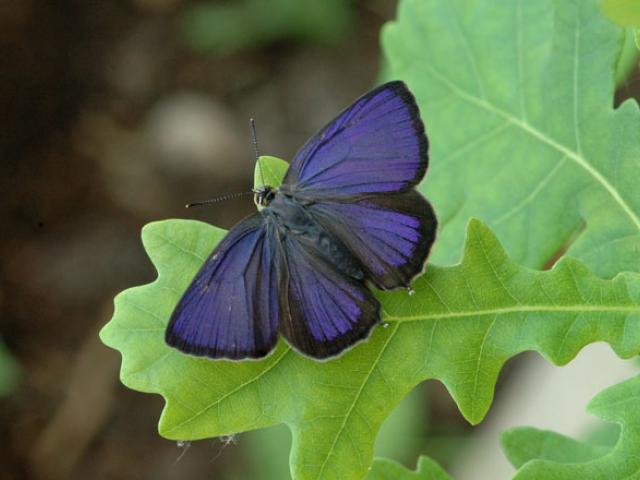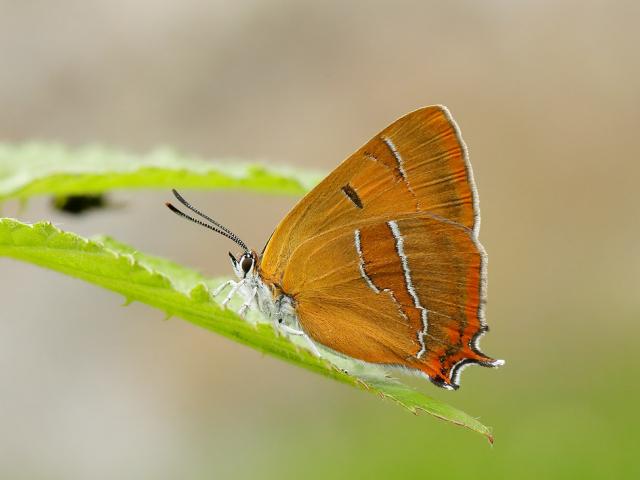The home of an elusive UK butterfly is at risk of being destroyed by road, rail and housing developments, wildlife charity Butterfly Conservation (BC) can reveal.
The Black Hairstreak lives and breeds on one unique stretch of butterfly habitat between Oxford and Peterborough – an area earmarked for projects like the high-speed HS2 railway and proposed Oxford to Cambridge Expressway.
This is also the only place in the country where all five species of the Hairstreak butterfly family can be found together, including the declining Brown and White-letter Hairstreaks, the Purple Hairstreak and the Green Hairstreak.

BC is launching the Five Hairstreaks project to try and protect this unique butterfly habitat and hopes to advise landowners and developers on how to minimise their impact on these butterflies and actually create new habitat for them.
BC’s Project Officer, Caroline Temple, said:
“Some habitat losses will be unavoidable, but by talking with landowners and planners now, we can find a way to manage existing sites to benefit the butterflies and create new habitat to compensate for any land that is lost.
“We won’t know the full impact of these developments until they are complete, but by working together we’re hoping to safeguard the future of these butterflies, especially the Black Hairstreak.”
The Five Hairstreaks project has received more than £48,000 from funders like The Big Give and BC’s Upper Thames Branch.
As part of the project members of the public will be invited to take part in butterfly identification workshops, so they can help to monitor butterfly numbers and carry out surveys.

Hairstreak butterflies like to fly high amongst the canopy of trees and can be distinguished from other butterflies by a white streak on their underwings and a thin tail coming off their hindwings, although this is less pronounced on the Green Hairstreak – the UK’s only green butterfly.
Caroline added:
“Over the last ten years, the Brown Hairstreak has declined by 48% across the UK and the White-letter Hairstreak has seen its numbers drop by 40%, but while these two are struggling, it’s the Black Hairstreak we are really concerned about, because it doesn’t naturally occur anywhere else in the UK.
“The butterfly actually had a great 2018 and BC even recorded a rise in its numbers, but none of that will matter if this key habitat is lost.”
Landowners and members of the public interested in getting involved with the Five Hairstreaks project should email Caroline at @email.
- The Black Hairstreak can be seen near to Blackthorn hedges or woodland rides on sites near to Oxford and south of Bicester between now and early July.
- The White-letter Hairstreak can be seen between mid-June and August near to Elm trees – the only food plant of its caterpillar.
- The Brown Hairstreak is on the wing from July until September.
- The Purple Hairstreak can be seen between July and early September.
- The Green Hairstreak can be found between April and mid-July.


